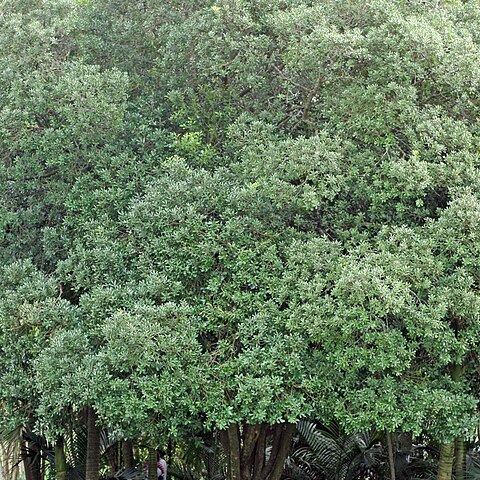Small tree to 15 m high, with sticky, white latex. Leaves: lamina oblanceolate, 6–11 (–14) cm long, 3–5.5 cm wide, cuneate at base, entire margin, rounded or sometimes slightly retuse at apex, coriaceous, venation reticulate, 14–20 primary veins on each side of midrib. Flowers 1 or 2 (sometimes 3), clustered, axillary. Calyx 5-lobed (rarely 4), quincuncial, ovate, 3–4 mm long, appressed pilose. Corolla tube 3–4 mm long; lobes (4 or) 5, broadly oblong, 1.5–2 mm long, rounded-truncate, finely erose. Stamens and staminodes 5 (rarely 4), linear or narrowly triangular, 1.5 mm long. Ovary conoid, appressed pilose; style c. 2 mm long, persistent. Fruit ovoid-ellipsoidal, 2–2.5 cm long, 2-seeded. Seeds smooth, slightly obliquely ellipsoidal, flattened, 1.7 cm long; scar linear, 15 mm long.
More
A tree. It grows 6-8 m tall but can grow 20 m tall. The trunk can be 1 m across. The leaves are shiny green and 5-10 cm long by 2-5 cm wide. There are 14-20 side veins. The small branches and leaf stems have short hairs. The flowers are small and delicate. They are 4-6 mm across. They are usually in the axils of leaves. The fruit are berries 3-4 cm long. They have 2-4 seeds. These are curved. They fruit change from green to orange to dark red as they ripen.

